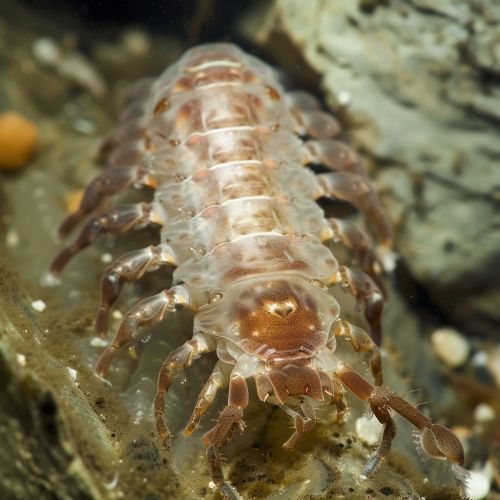Amphipods
Introduction
Amphipods are a large and diverse group of small, shrimp-like crustaceans. They are part of the order Amphipoda, which includes over 9,900 species distributed worldwide. Amphipods play a crucial role in many ecosystems, serving as a link between the bottom-dwelling (benthic) and the free-swimming (pelagic) components of marine, freshwater, and terrestrial environments.


Biology and Anatomy
Amphipods are characterized by their laterally compressed bodies, which distinguish them from the similarly small but cylindrically-shaped isopods. They typically possess 14 segments, which are divided into a head, thorax, and abdomen. The head bears two pairs of antennae, while the thorax has eight pairs of appendages, and the abdomen has six pairs.
Amphipods exhibit a high degree of sexual dimorphism, with males generally being larger and possessing larger gnathopods (clawed appendages) than females. The gnathopods are used for a variety of functions, including feeding, fighting, and mating.
Habitat and Distribution
Amphipods are found in nearly all aquatic environments, from the deepest parts of the ocean to the highest mountain streams. They are also found in terrestrial environments, where they inhabit moist habitats such as leaf litter or under logs. They are particularly abundant in cold waters, such as the Arctic and Southern Oceans, where they form a significant part of the zooplankton community.
Feeding and Diet
Most amphipods are scavengers, feeding on dead organic material (detritus). However, some species are predators, feeding on other small invertebrates, while others are herbivores, feeding on algae and other plant material. Their feeding habits make them an important part of the food chain, linking the producers (plants and algae) with higher trophic levels such as fish and birds.
Reproduction and Life Cycle
Amphipods reproduce sexually, with males grasping females with their gnathopods and depositing sperm packets directly into the female's brood pouch. Females carry the eggs in a brood pouch until they hatch into juvenile amphipods, which closely resemble the adults. The life cycle of amphipods can be as short as one year in some species, but others may live for several years.
Ecological Role
Amphipods play a crucial role in many ecosystems. As detritivores, they help to break down organic material and recycle nutrients back into the ecosystem. As prey, they form a significant part of the diet of many species, including fish, birds, and larger invertebrates. Some species of amphipods are also known to be ecosystem engineers, altering their environment in ways that create habitats for other species.
Human Interaction
While amphipods are generally of little direct importance to humans, they can have indirect effects. For example, they are often used as indicators of water quality, as they are sensitive to pollution and changes in environmental conditions. Some species are also used as live food in aquaculture and aquariums.
